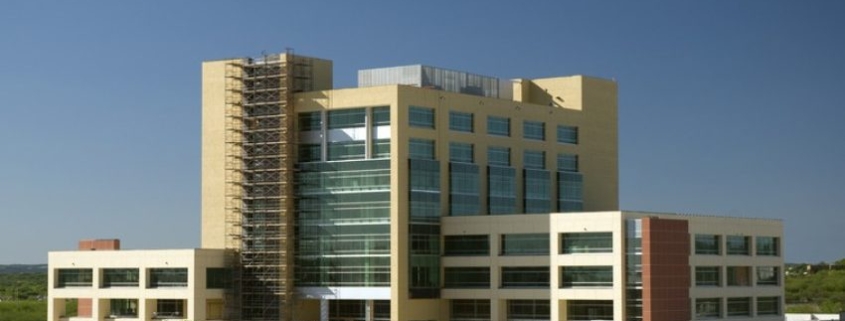Life Sciences More Than Doubles Sector Investment After Pandemic Upheaval
After more than a year of grappling with a historic global pandemic, and the ensuing upheaval that impacted every established economy and industry across the world, one sector of commercial real estate has prospered so effectively that venture capital funding more than doubled from first-quarter 2020 to the same period in 2021.
According to a new report by CBRE, “U.S. Life Sciences: The Biotech Revolution Emerges Even Stronger Post-Covid-19,” this is exactly the state of the life science sector today, and it may be the salve that helps heal an industry in the wake of an unprecedented public health and economic crisis.
“While there’s so much upheaval in commercial real estate — whether it’s offices, retail, hotel, what have you — life sciences, laboratory R&D space, and manufacturing have only strengthened,” said Ian Anderson, senior director of research for CBRE, who authored the report. “I don’t think there’s one element in the data where we haven’t reached a new record as we speak, and it just continues to get stronger.”
In addition to the massive increase in venture capital funding, CBRE reports that the demand for life sciences space across all major markets has grown by 34 percent since mid-2020. And, while more than 15.6 million square feet of speculative space is currently under construction, it is exceeded by tenant requirements being driven, in part, by massive increases in the sector’s employment.
“U.S. life sciences employment reached a record high in March 2021, driven by the revolution in biotechnologies and other industry advancements,” read the report. “Industry job growth has jumped nearly 15% since March 2017, surpassing growth in the technology sector.”
As venture capital, employment and general demand grow, so have rents throughout major life sciences markets. The report’s findings include a close to 50 percent increase in lab and research and development rents in the Boston-Cambridge cluster, and almost 40 percent for the same sector in San Diego since the end of 2017. Life sciences rents in Philadelphia, meanwhile, have increased by 35 percent since the middle of last year.
All of these drivers have combined to position life sciences as a dominant sector in commercial real estate in 2021 and beyond, as investors clamor for involvement and seek investments that provide stability in the midst of widespread market volatility.
“The COVID-19 pandemic fueled some of the alternative sectors, so health care, data centers, and life science centers were some of the beneficiaries of investors moving away from more traditional product types and into more purpose-built facilities,” said Chris Bodnar, vice chairman and co-head of Healthcare & Life Sciences Capital Markets at CBRE. “The investor pool is looking for that stickiness of the tenant going forward, especially in light of what’s happened in the office sector and concerns about how work-from-home will impact renewal probabilities.”
The evidence is especially strong in New York City, where “ … lab leasing activity has already reached a record high for a single year, at 257,000 square feet through May 2021,” according to CBRE’s findings. As contributors to the increase in activity, CBRE highlighted the Icahn School of Medicine at Mount Sinai’s recent lease of 165,000 square feet of research-focused space at 787 Eleventh Avenue, and also noted C16 Biosciences’ 19,000-square-foot lease at the Hudson Research Center, where the Bill Gates-backed startup will relocate from its incubator space at BioLabs New York.
According to Anderson, the explosion in demand for life sciences investments over the past five to six years marks the coalescence of numerous trends, including the fading effects of the 2008 recession leading to greater economic optimism, more accessible capital, insurance companies pressuring corporations to find more cost-effective solutions, rapid advancements in technology, the pandemic-driven decline of other sectors, and the extraordinary investment in the search for solutions to the COVID-19 pandemic.
“In many cases, the fact that so many other industries were in distress caused investors to look for brighter opportunities,” said Anderson. “Real estate developers and venture capitalists all of a sudden saw a new industry in the spotlight.”
Bodnar also sees three other reasons investors are going all-in on life sciences.
“One is, you can’t do research from home. Putting lab space in your home is not a viable option,” Bodnar said. “No. 2, we don’t anticipate [National Institutes of Health] funding for this sector slowing down anytime soon —we only see it accelerating. And No. 3 is that venture capital funding is accelerating. Capital flowing into this sector from private equity and venture capital is growing exponentially, and this doesn’t go unnoticed by real estate investors, some of whom are even making investments as venture capital partners with biopharma companies.”
Given all of these market forces, it’s unsurprising to see owners converting real estate initially dedicated to other sectors into life sciences facilities.
“You’ve got a lot of commercial real estate holders — could be owners of suburban office buildings or even downtown office buildings — looking for some type of silver lining; some type of better exit for themselves. So, they’re looking at converting to labs,” said Anderson. “Office owners have been through such a troubled time over the past year, and some of them have been carrying buildings in distress for many years. So, they see a potential opportunity to make a quick and easy out, and convert their office building to laboratory.”
“We’ve even had some groups talk to us about converting medical into life sciences,” said Bodnar.
And, while life sciences is now pulling from other sectors, it’s also spreading into geographical areas beyond traditional clusters like Boston-Cambridge, the San Francisco Bay Area and San Diego.
“Raleigh — one of the hotter markets — is more traditional, but that market is just so impressive,” said Anderson. “Not only have we seen huge demand for laboratory R&D space, but also for biomanufacturing and high tech. So that market continues to impress. Pittsburgh has also been impressive. And a few that are emerging that we haven’t talked about in the past as much are Portland, Salt Lake City and Dallas. They’re probably in the beginning stages, but we’ve seen a lot of venture capital go into those markets.”
Taken all together, the report’s findings indicate that while life sciences has been the notable winner in commercial real estate throughout the pandemic, it’s possible we still haven’t scratched the surface of how strong the life sciences sector will become.
“I’ve been tracking this space for years now, and it just continues to get stronger and more intense each year,” said Anderson. “The demand for laboratory R&D space by the life sciences industry is stronger than ever.”
Source: Commercial Observer




